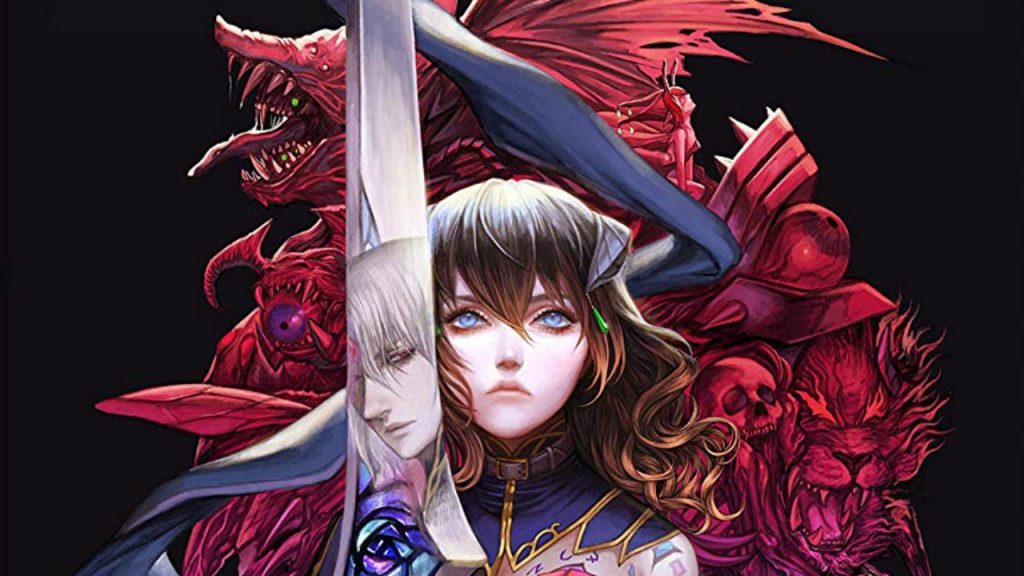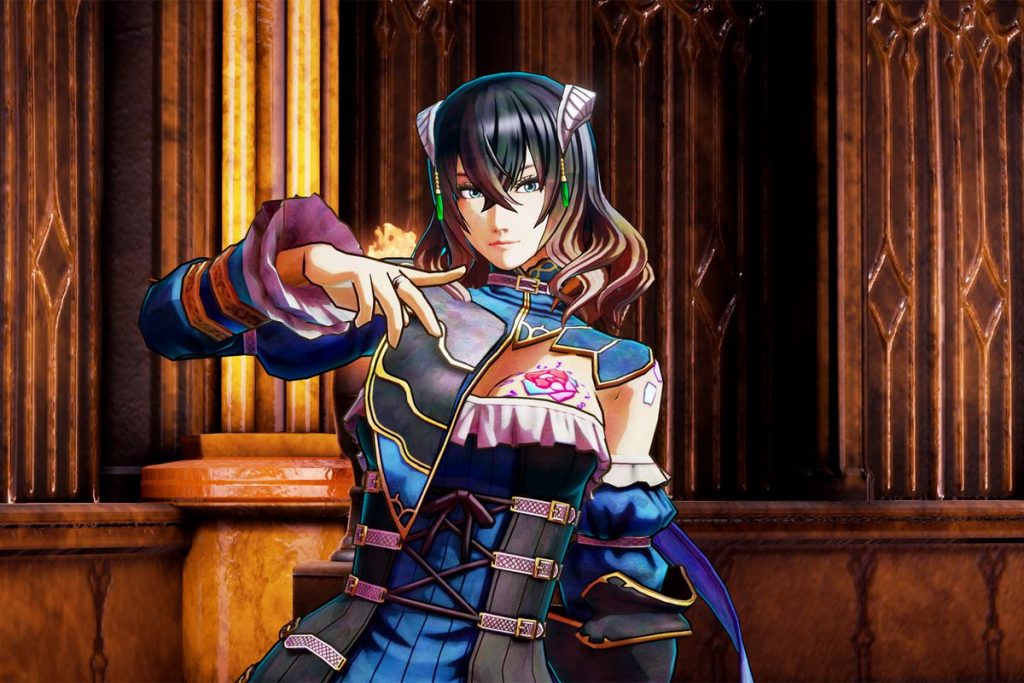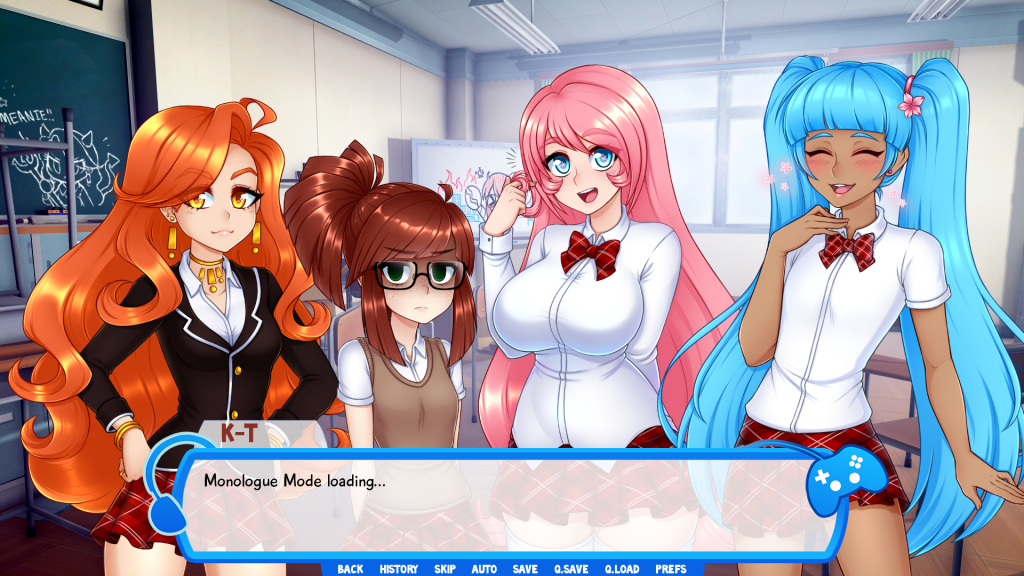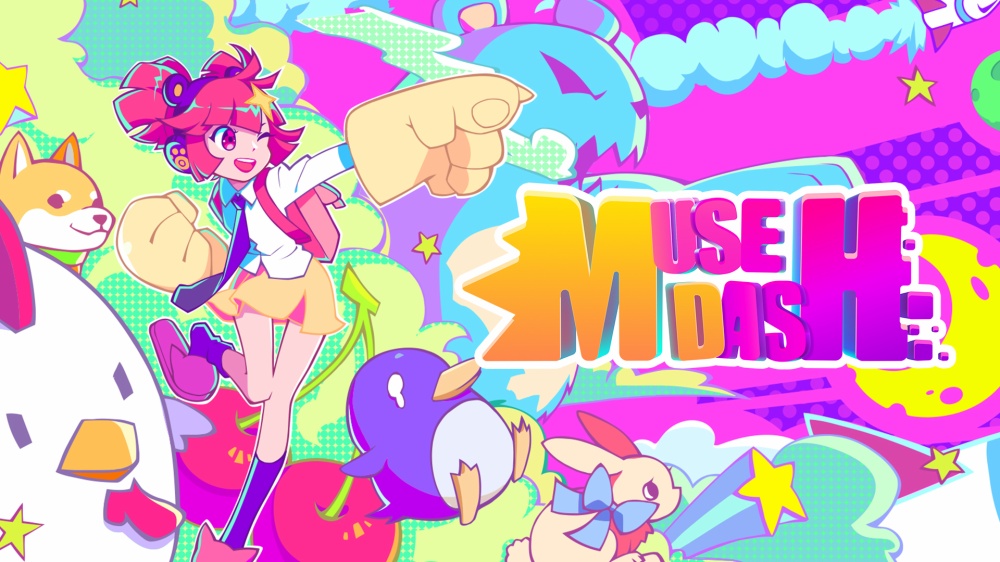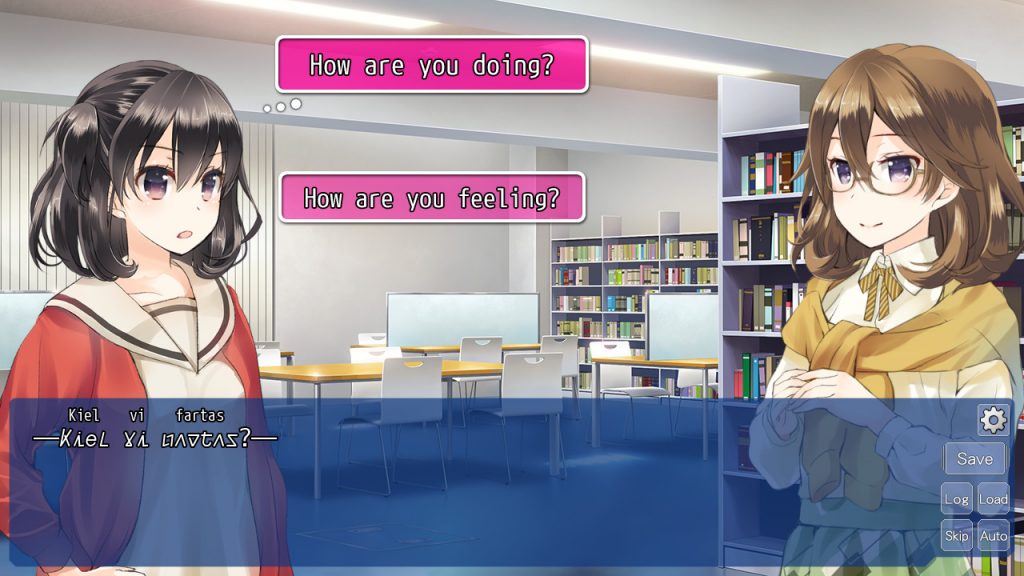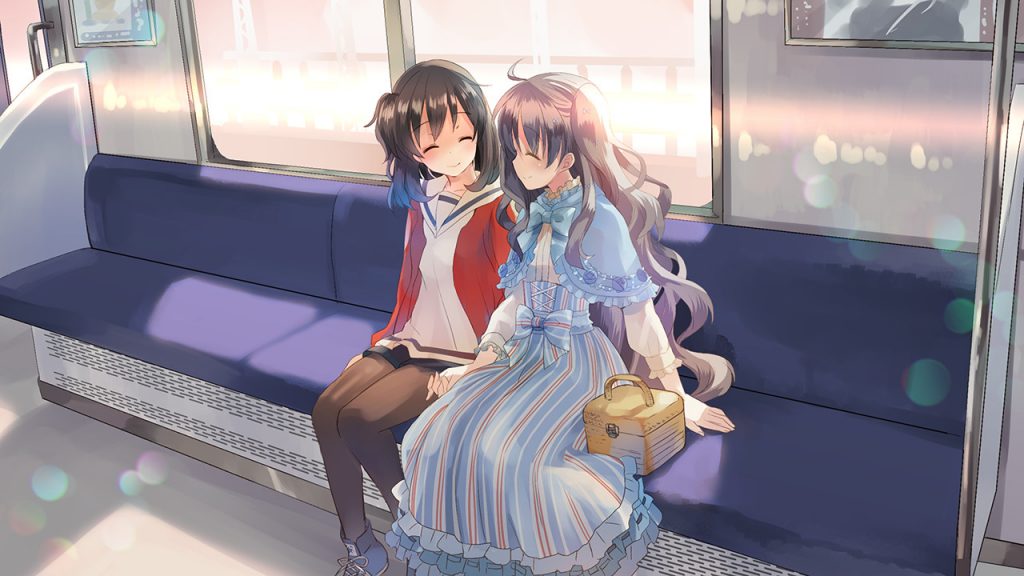This week, I checked out all the anime games that came out last week and decided to review the best ones. This review roundup includes Bloodstained: Ritual of the Night, LuGame: Lunchtime Games Club, Muse Dash, and The Expression Amrilato. You can watch a video version of the reviews below or you can keep reading the text version on this page.
Bloodstained: Ritual of the Night
Koji Igarashi is one of my new personal heroes after experiencing Bloodstained: Ritual of the Night. Iga is a former producer of the Castlevania series, having first directed Castlevania: Symphony of the Night back in 1997. When Konami wouldn’t let him make a new Castlevania that fans wanted, focusing on mobile games instead, Iga left in 2014 to Kickstart and make a spiritual successor to Castlevania himself.
Bloodstained: Ritual of the Night is a really enjoyable Metroidvania. I’ve actually never played a Castlevania game before myself, but if Bloodstained’s gameplay is anything like the older Castlevania games, then I’ve really been missing out. You fight demons and monsters as a Shardbinder, people who were experimented on by alchemists and now possess the ability to use the powers of crystal shards. As you fight your way through the levels, you gain more shards from the enemies and bosses you defeat and you can use new powers from the shards as a part of your loadout.
Visually it’s fantastic. The way the backgrounds look with the 3D level design is just beautiful. I saw the old trailer for the game during one of my anime night Twitch streams a long time ago and I remember not thinking much about it. Especially the visuals, which I didn’t care for at all. Now, you can find a new trailer where Iga shows everyone else’s criticisms on top of old gameplay before saying he’ll “prove us wrong” and then showing vastly updated visuals of the game now. I gotta say, the man knows how to market his games.
It’s definitely not a perfect game, though. There’s some things about it that definitely give it the “Kickstarter game” feel, especially the dialog scenes. It’s also hard for me to tell what parts of the levels are platforms and what are part of the background sometimes, but that doesn’t happen often and that might be something done on purpose to hide certain things later in the game.
The enemies and other characters have great designs though. I love Zangetsu especially even though all he’s done so far is show up and kick my ass for about an hour because I’m bad at video games. There’s also a giant cat with horns in a portal… I mean… what more do you need to hear? It’s $40 on Steam, go get it now.
LuGame: Lunchtime Games Club!
Gamers are rising up in LuGame: Lunchtime Games Club, an English visual novel by Urban Meadows. It’s getting pretty hard to find new releases of quality English visual novels, especially on Steam. But with what looks like a small team of four people, Urban Meadows has made a fantastic little slice-of-life rom-com about a school gaming club that doesn’t even have games.
It’s centered around interactions with it’s cast of waifus, each of which have their own charms to them and all of them looking amazing with their designs. Seriously, the art for this by SpewingMews is so good I would’ve easily paid more just from that alone. Their designs and expressions were what immediately drew me into wanting this game. But the way their characters develop and their banter with each other kept me hooked.
There are four girls in LuGame. There’s Tifa, the pink-haired, busty, childhood friend who loves gaming and very obviously has a crush on you. Stacey, the rich, demanding, student council president who flatout admits she wants you. KT, the short, cutesy, socially awkward president of the gaming club that also thinks she’s a robot (and has some of the greatest lines as a result). And Alex, the mysterious, popular, “perfect” girl who comes off fake as all hell.
All the girls play off each other really well, with Tifa being motherly to KT, Stacey poking fun at Tifa’s feelings for you, and KT learning about friendship and getting too excited. The games club itself is pretty scuffed, at first only having an incomplete deck of playing cards. It’s basically one of those clubs where they just hang out with nothing to do. But you go on trips to anime conventions and the beach together and have fun interactions with the girls.
Out of the four waifus, my favorite is probably KT. Not only does she have some of the best lines, but I also had a similar awkward stage growing up where I thought I was a robot. It never got to the extreme levels that KT is at, but I can connect with that feeling of not fitting in with other people and wanting to cope with it by thinking you aren’t human. In fact, there’s quite a few of these nice little interactions for all the characters that make them feel real.
Probably the only girl I didn’t love was Alex. Her design is the least interesting to me, her fake perfection is pretty apparent and makes her unappealing to me, and she has a tendency to just keep herself out of events with the group so I barely get to see her develop as much as the others.
I haven’t beaten the game yet, but it’s supposed to be about 8 hours of gameplay and has three routes you can go through. The only girl that doesn’t get a route is KT and I’m very disappointed to hear that because she was my favorite. The main reason is probably the fact that she’s supposed to be younger, which they joke about immediately upon meeting her. So they probably didn’t give her a route because it would mean dating someone that looks like a kid. But the store page says all the characters are 18 or older and the game isn’t an adult one. Moreover, you could just have her route not be about dating her but about helping her overcome her social anxieties in a more natural way than pretending she’s a robot and growing your friendship with her. There’s so much potential for a KT route.
I’m upset that while we don’t get a route for KT, we do get one for Alex even though she wants nothing to do with the group and is basically being dragged along by Stacey while trying to maintain her “perfect” status. Although, again, I haven’t reached the ending yet, so these opinions are subject to change. But at least I can still end the game with Stacey, who was a pretty close second for “best girl” to me.
LuGame is a great English visual novel with phenomenal art, excellent writing, and great characters that makes it a fantastic grab for its $8 price tag.
Muse Dash
You like rhythm games? I do. I absolutely love them. And Muse Dash is definitely no exception. PeroPeroGames released Muse Dash a year ago on Android and iOS but now it’s been released on Steam and the Switch.
Muse Dash is very simplistic in its gameplay, you just hit enemies to the beat of the song. Pressing any button on the right side of your controller will hit the bottom enemy and pressing any on the left will make you jump and hit the top enemy. There’s notes you hold down, extra points you can grab or ignore, notes you have to hit at the same time, and bosses that throw stuff at you. Bigger enemies can collide with you and you just spam all of your buttons to hit them as many times as you can to bump up your score.
There’s ghost enemies that disappear just before you hit it that you can either hit for extra points or you can ignore them and you don’t lose any health or your combo. There’s also a fever mode, triggered by how well you’re doing, which gives you more points for each note you hit during it. Although fever mode is triggered automatically so there’s times where it can activate but there’s barely any notes for you to benefit from it.
The game is very visually pleasing with its colors and designs. I was sold on this game just from how much effort they put into the trailer to make it look exciting. With most of these kind of rhythm games, the constant moving of the background, enemies, and main character can be dizzying at times, but usually you get used to it after awhile.
There’s three different characters with a lot of costumes you can unlock by collecting enough randomly dropped items after completing a song. Every different character-skin combo has a unique effect that can either help boost your score or keep you alive. I thought that kind of mechanic was weird at first to have given that this game has a leaderboard system, but I guess that isn’t a huge problem because they don’t increase the game’s difficulty in any way so people can just complete the song wearing whatever skin that gets them the most points. That’s different from osu which has a leaderboard system and mods that affect your score but you have to earn those points because they change the song’s difficulty.
There’s also elfins, which are just familiars that float near you and also have special effects to help you out. They’re kind of like little accessories for your skin. And you also get some challenges every 6 hours to help boost your level up, which is a common mechanic for mobile games so it makes sense that it’s here and I love it.
The songs have normal and hard modes, but to unlock the master difficulties of songs you have to at least get an S-rank on the hard mode. I don’t know if I like this because, as I’ve experienced with other rhythm games, the faster-paced song maps can be easier for some players that are more used to using just their reflexes or because it’s just easier for them to stay on beat. But this wasn’t as much of a problem as I thought because some of the character skins are just there to make the game easier and more enjoyable for you. One skin won’t let your combo drop if it’s under 100, and one will just give you up to 5% more accuracy in your final score.
The game itself carries an incredible amount of value with the base game being just $3. The base game gets you a whooping 40 songs that you unlock as you level up. There’s also a free music pack that you unlock at level 30. If you end up enjoying the game a lot, you can buy the Just As Planned DLC for $30 which contains 13 other music packs with 6 songs in each, which is 78 songs.
So for $33 you get about 120 songs and you access to future music packs as they’re released. It’s kind of like a season pass, except that the game actually came out on mobile last year. So for these new versions, right out the gate, you get a ton of content for buying the season pass. Definitely worth the buy, it’s very addictive, exciting, and enjoyable.
The Expression Amrilato
Educational games that aren’t geared for children can be hard to do well, but The Expression Amrilato gracefully balances learning a new language with a beautifully written yuri visual novel story.
I’ve played visual novels before aimed at dealing with language learning and most of them would just come up with some cheesy story as an excuse to why you’re learning. There’s nothing really wrong with those games because they still do well with teaching, but The Expression Amrilato has found a way to write itself in such a perfect way that you actually feel a legitimate reason and connection for why you should learn.
You play as Rin who one day is suddenly brought into an alternate world where the sky is always pink, all the history is slightly different, and, most importantly, everyone speaks a different language. Rin is now stuck in a new world with no way to communicate with anyone and no idea what’s going on with her. Naturally, she crumbles and starts to feel hopeless, until a girl named Ruka finds her and tries to help.
The language is called Juliamo in the game, but it’s actually based on a real language called Esperanto, the most widely used constructed international language. It was designed as a language people could learn as a sort-of “common tongue” and the developers of the game actually made this game with the official supervision of the National Esperanto Association.
The game’s alternate world occasionally gets visitors like Rin from other worlds and they have entire government centers set up to help these visitors survive and learn the language. They even give them a stipend if they’re a minor. And one thing I really love is that the writers went so far with their worldbuilding that they even said some people tried to abuse the visitor registration system in the past and now have to interview people to actually confirm that they’re real visitors. It’s a nice little touch that adds to the realism of being in that kind of situation.
Japanese is still a language that exists in the alternate world, but it’s a bit different. Ruka knows a little bit of that Japanese and uses this knowledge to try to bridge the gap in her communication with Rin. Thanks to the past visitors that came from similar Japans, the visitor registration has some versions of Japanese that they already know about and can now translate into Juliamo. They use this as a catalyst for why, in this frightening situation, you’re still able to learn the language.
There’s a massive language barrier that you have to slowly start to tear down, first through just guessing and gestures and later through interactions that lead to funny little misunderstandings. Playing this game in English is kind of like a three-way language dance because it was originally in Japanese and it’s about learning Esperanto but then it’s all translated into English. Sometimes it can be three layers of misunderstandings or jokes. So god bless the people in charge of localizing this game into English because they did a pretty great job.
In between the thematically engrossing story about communication, the game does really well with teaching you Esperanto. You learn some initial easy phrases just from your character’s attempts at establishing communication, then you learn the alphabet, and then you start to learn more phrases. Some of the phrases that were more difficult to understand but your character now learns will be pointed out and then it even gives you little easy ways to remember them.
A lot of Rin’s dialogue during the learning process was actually some of the exact same thoughts I was having while learning the language and I really enjoyed that kind of shared learning connection. You also get reviews, homework, and quizzes that can help you nail down the knowledge more. But if you struggle with the learning or want to just stick with the story you can actually turn these off in the options menu.
What really amazes me about The Expression Amrilato is how well its theme of communication is used in the story. Like I said before, this game isn’t set in an alternate world as just an excuse to learn, it’s a pivotal driving point of its themes. It feels like this beautiful story about feeling isolated, alone, and scared in a world that doesn’t understand you, and the cheerful moments when you do break through and make a connection with someone, was written without the idea of actually being an educational game.
It’s almost like the introduction of language learning mechanics was an afterthought that was incorporated amazingly and I love it. Even the language they chose fits in great thematically. They could’ve picked any language to teach you. Instead they chose a literal world language in their game about dealing with isolation.
The Expression Amrilato is $25 and it’s well worth it. It’s 10-30 hours of excellent story, cute characters developments, extensive Esperanto learning material, and fun interactive review mechanics. It’s “tre bone”!





